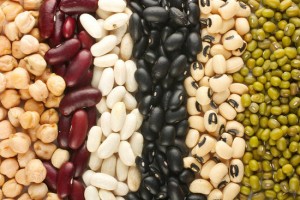Mordor analyses plant protein market
 Mordor Intelligence has announced the publication of its research report on the plant protein market: “Global Plant Protein Market- By Product Type, Application, and Geography -Market Shares, Forecasts, and Trends (2015-2020)”.
Mordor Intelligence has announced the publication of its research report on the plant protein market: “Global Plant Protein Market- By Product Type, Application, and Geography -Market Shares, Forecasts, and Trends (2015-2020)”.
According to Mordor, the plant protein market was valued at $7.67 billion in 2015 and is projected to reach $10.12 billion by 2020, at a compound annual growth rate (CAGR) of 5.7% during the forecast period.
Plants differ from animals in their unique capability to synthesize all the important amino acids on their own, the company notes. This offers a unique proposition to extract protein from the plant produce to be used as ingredients in various industries. For the scope of this report, we consider the plant protein, which is commercially extracted from various sources. This protein is used as an ingredient in various industries, such as the food and beverage, pharmaceuticals, and animal feed industry.
The current market share is dominated by North America, which is closely followed by Europe, while Asia-Pacific and other regions form a minor chunk. However, says Mordor, the Asia-Pacific market has a great potential; it is projected to grow at a CAGR of 6.1% during the given forecast period. It is an area with immense potential for the plant protein market, as the region has an increasing population, growing per capita income, and an unorganised livestock production system.
Plant protein ingredients act as excellent substitutes for the traditional meat-based protein ingredients, Mordor claims. Increase in population, growing demand for protein products, and the attractive amino acid profile of plant proteins have increased the demand for plant protein ingredients in the market. The inclination of consumers towards plant proteins is driven by factors such as easy digestibility, sustainability in production, relatively cheaper price, and ethical reasons for not choosing meat-based proteins. The extensive research to discover new sources and the need to improve extraction techniques are said to act as push factors for the increased usage of plant proteins.
The report is segmented by application, source, type, and geography. The market size and forecast values are provided for each of these regions in the report. By application type, the market is segmented into meat analogues, sports nutrition products, beverages, bakery, pharmaceuticals, animal feed, and others. Meat analogues and sports nutrition have the major share in the market, which is driven by the demand from growing health conscious consumers. Bakery and sports nutrition products are growing at the fastest CAGR. Based on source type, the soy protein segment dominates market share, followed by the wheat protein segment. However, due to healthy nutritional profiles of pea and other vegetable protein, it is moving at the fastest growth rate. On the basis of type, the market is segmented into isolated protein, protein concentrate, and textured protein. Textured protein is mostly used in meat analogues, thereby achieving a good share in the market, by type. Protein isolate, being the purer form, has relatively higher costs and is used in mostly pharmaceutical applications and sports nutrition products.


































